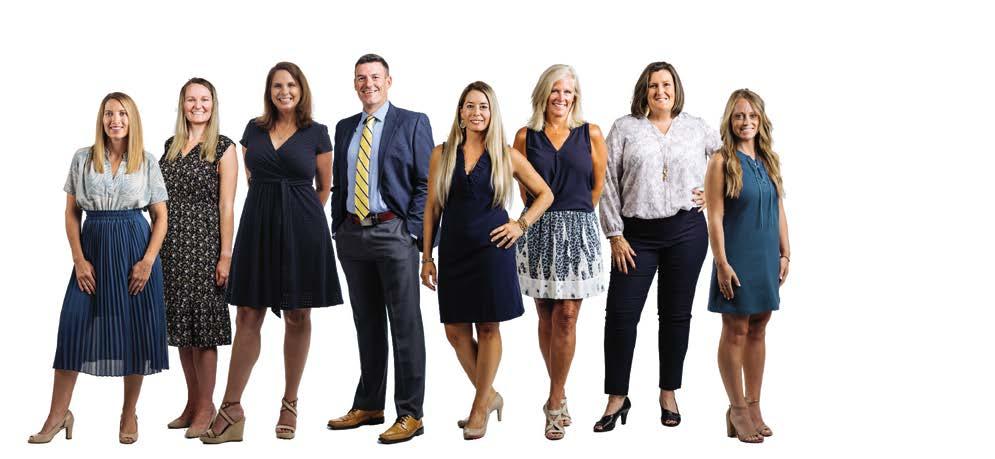
5 minute read
Diversity, Equity, and Inclusion for Community Associations
The Community Associations Institute (CAI) recently issued its Diverse and Inclusive Communities Guide outlining ways Boards and managers can promote diversity and prevent discrimination in community associations.
You would think that an industry that literally starts with the word “community” wouldn’t need to tackle the issue of “inclusion for all” so head on. But even community associations have a dark past to overcome.
Baltimore enacted the first racial zoning ordinance in 1910. It restricted African Americans to living in certain blocks. While the zoning ordinance was struck down by the U.S. Supreme Court, the relegation of minorities to certain locales didn’t stop. Not being able to segregate directly through zoning codes, developers promoted segregation through racially discriminatory private covenants recorded in land records which ran with the title of the property.1 In fact, it was only in 2018 that the Maryland Homeowners Association Act was amended to proactively void, as a matter of law, and require associations to delete, any covenants aimed to restrict homeownership based on race, religious belief or national origin; covenants which, sadly, are still being found in older governing documents.
The Federal Housing Administration, aimed to help everyday Americans achieve the dream of home ownership, also had its hand in this dark past. When it was established in the 1930s, FHA took into account racial occupancy in determining the level of underwriting risk for mortgages.2 This practice is called “redlining”, which is basing credit decisions on the location of a property and surrounding characteristics, including the locale’s racial composition. To put it plainly, mortgages issued for properties in close proximity to black neighborhoods were deemed high risk. The term “redlining” was generated because neighborhoods deemed most risky for mortgage support were outlined in red on maps prepared by now extinct federal offices involved in the lending market after the Great Depression.
The passage of the Federal Fair Housing Act in 1968 was a significant first step in stopping discriminatory practices in housing transactions (sales, rentals, lending, etc.), including the practice of redlining. Since the passage of that Act, the number of protected classes has been expanded beyond the original protected classes of race, national origin, color, religion, and gender. The Federal Act was expanded in 1988 to include disability and familial status as protected classes. Maryland, as a state, recognizes even more protected classes of marital status, sexual orientation, gender identity, and source of income. Many counties and cities within the state expand protections beyond the state protections to include personal appearance, ancestry, and citizenship, to name a few.
In 2016, the Department of Housing and Urban Development, through its regulatory power, imposed a requirement that associations take active measures to address discriminatory housing practices within their communities (hostile environment and quid pro quo discrimination, specifically). But even with the passage of these laws, and expansions to include more protected classes, we still read about claims of discrimination within community associations. There is a federal case on appeal right now regarding an African-American woman who was renting a home in a Maryland homeowners association. She asserted that she was targeted for selective enforcement of various rules and regulations pertaining to parking on the basis of her race and source of income through government assistance programs. While the association prevailed at the district court level, legal practitioners will be watching the appeal of this case very closely. Even if the association continues to prevail in the litigation, it is still never a good look for an association to battle claims of discrimination in federal court.3
One of the courses offered at the recent 2022 CAI Annual Law Seminar in February was entitled “Bias in Our Communities: Strategies for Recognizing, Managing & Eliminating Bias.”4 The presentation recommended a deep look into how community associations may
1 Lydia Pierce Linsmeier, Esq., “Discrimination, Restrictive Covenants and Community Associations”, LinkedIn (November 2020). 2 Lydia Pierce Linsmeier, Esq., “Redlining: The Echo of Discriminatory Housing Practices”, LinkedIn (January 2020). 3 See Williams v. Arora Hills Homeowners Association, 2021 WL 2226199 (D. Md. June 2, 2021), appeal filed (4th Cir. July 6, 2021). 4 Presented by Melissa Bauman Ward, Esq., Hughes Gill Cochrane Tinetti, P.C., Jennifer L. Martin, Esq., Amherst, and Valerie Farris Oman, Esq.,
Condominium Law Group, PLLC.
be creating and propagating bias in rules, policies, and governing documents, in the way associations pursue enforcement, and in its representatives’ everyday interactions with members of the community. For example, we learned that the term “grandfathering”, which, in our industry, refers to an exemption from a provision for owners who took title to their property before a certain date, like we see sometimes with smoking bans or lease cap amendments, has discriminatory origins. The practice was used to describe some southern states’ Jim Crow era laws which required voters to pass literacy tests or meet other voter qualifications, but exempted men who were the descendants of men who were eligible to vote before 1867, i.e. “grandfathers”. The use of “grandfathering” disenfranchised voters of color whose descendants were former slaves ineligible to vote. Even today, we see some evidence of bias in the use of male only pronouns in governing documents, such as “he/him”, or with director qualifications and eligibility to serve on Boards, such as the candidate needing to be of “good character”—a pretext to weed out undesirable candidates in a discriminatory way.
In another publication entitled Creating Harmony in Diverse Communities, CAI recommends the following approaches for preventing and resolving claims of discrimination: • Establish formal procedures for handling diversity and discrimination issues in associations. • Promote the importance for continuing active social programs and communications to create a sense of community. • Educate boards and managers on relevant state and federal laws on diversity and discrimination issues as well as emerging changes in the way courts are handling these issues. • Encourage board training on diversity and discrimination issue management and on how to handle resident-to-resident complaints and complaints to the board.
We know more work is needed to create and maintain “inclusion for all” in the community association industry. One first step community associations can take is to sign CAI’s Equality Pledge. This is a set of principles that associations can adopt to show a commitment towards fostering an inclusive and non-discriminatory environment. Written by Leslie Brown Shareholder, Rees Broome, PC lbrown@reesbroome.com

Condominium & Community Association Insurance Specialists
Extensive Coastal Experience Dedicated Community Association Team

Seamless Claims Processing by our in-house Claims Team Insuring more than 500 Condominiums Board Member & Unit Owner Support: • We attend Board Meetings & Annual Homeowner Meetings Celebrating our 93rd Year of Excellence

Our award-winning team is ready to answer all your Coastal, Condo & CA Insurance questions!
Visit deeleyinsurance.com. We’ll audit your existing insurance policies against the governing documents of the association, help to develop a claims protocol, and create a thoughtfully-tailored program to protect your home and property, so you can Be Sure. (410) 213-5600 /deeleyinsurance









